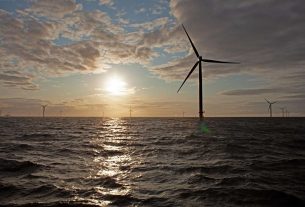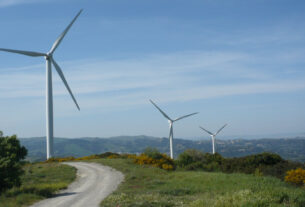United Kingdom – Huge falls in the cost of solar and wind power in the last few years have unlocked an energy reserve that can meet world demand 100 times over, a report from Carbon Tracker finds.
Solar and wind are inexhaustible sources of energy, unlike coal, oil and gas, and at current growth rates will push fossil fuels out of the electricity sector by the mid-2030s. By 2050 they could power the world, displacing fossil fuels entirely and producing cheap, clean energy to support new technologies such as electric vehicles and green hydrogen.
2019 consumption
Global energy consumption in 2019 was 65 Petawatt hours (PWh). However, with current technology the world has the potential to capture more than 5,800 PWh annually from solar PV alone – as much power in a single year as could be generated by burning all known fossil fuel reserves. In addition, onshore and offshore wind could capture nearly 900 PWh a year.
Solar and wind already economic
The Sky’s the Limit finds that around 60% of the world’s solar resource and 15% of its wind resource is already economic compared with local fossil fuel generation. By 2030 all the solar and over half of the wind is likely to be economic.
Building enough solar panels to meet global energy demand would take up just 0.3% of land, less than the area occupied by fossil fuels. The world’s largest oilfield, Ghawar in Saudi Arabia, which occupies 8,400 square kilometres, produces the equivalent of 0.9 PWh each year. Building solar panels over the same area would generate 1.2 PWh a year on average globally and 1.6 PWh in Saudi Arabia which is sunnier than average.
Emerging markets
The study finds that the opportunity is greatest in emerging markets that have the highest solar and wind potential relative to their domestic demand. Many are still building out their energy systems, and cheap renewables offer a route to bring power to more people, create new industries, jobs and wealth. Africa has a massive 39% of global potential and could become a renewables superpower.
The economic potential of solar has been unleashed by a huge fall in costs, down by an average 18% every year since 2010. It is growing faster than any previous energy technology at this size with an average annual increase of 39% in the last decade – nearly doubling capacity every two years. Wind is on a similar trajectory: over the last decade prices have fallen by an average 9% year while capacity has grown 17% a year. [4] This is driving efficiencies and advances such as better panels and higher turbines which reduce costs further.
Political barriers
Financial markets are waking up to the opportunity: in 2020 for the first time clean energy companies raised more money than fossil fuel companies through public offerings.
The Sky’s the Limit says the key barrier to change is now political, but growth is likely to continue as more countries recognize the potential of renewables, and the opportunity is huge: in 2019 solar generated just 0.7 PWh globally and wind 1.4 PWh.
Exponential growth
The scale and falling costs of this vast cheap energy resource is likely to drive continued exponential growth in the deployment of solar and wind generation. The report finds that a growth rate of 15% would see solar and wind generate all global electricity by the mid-2030s and provide all energy by 2050 as falling costs and technological advances overcome the challenges of powering sectors like steel and cement production.
The report is the first to identify four key groups of countries based on their potential to harness solar and wind resources relative to their domestic consumption. It identifies them as superabundant, abundant, replete and stretched.
Countries potential
Germany has pioneered solar and wind, provoking concerns about the cost of the energy transition and land usage, but the report says it is a special case. It is the third most “stretched” country in the world, with low potential for renewables to demand, and it subsidized them at a time when they were far more expensive. “The troubles faced by Germany are therefore highly unusual, and if they can solve them then so can everyone else,” says the report.
Countries like the UK and Korea with significant constraints on land availability are likely to make greater use of their offshore wind resources instead of pursuing solar.
The report uses BNEF data on the levelized cost of solar energy around the world to calculate what solar production is economic today, taking the mid-price in each country and comparing it with the cheapest fossil fuel. With costs expected to continue falling at similar rates the entire landmass where solar can be placed will likely have economic potential by the end of the decade.




